Golden Time is an anime adaptation of a light novel series. The anime released back in 2013. I will spoil the story in this discussion.
Golden Time is one of the rare anime that doesn’t take place in high-school. The characters are all college age, but, for the most part, this acts as window dressing for what’s otherwise a high-school romance. The story hits all the same beats as the typical high school rom-com but uses the college setting to fix the problem of absent parents high school stories hand wave. Banri Tada suffers from amnesia after suffering head trauma during an accident on a bridge. He was waiting on the bridge for his high-school crush Linda’s answer to his kokuhaku. He ends up forgetting everyone and everything. He avoids the discomfort of this and the resulting personality change by going off to Tokyo to attend law school. Banri’s amnesia follows anime’s handling of it. Amnesia in anime terms changes the sufferer’s personality and, when the memories return, overwrites the person’s new memories and personalities with the old. Amnesia doesn’t work like this. This is more akin to multiple personality disorders. Banri’s case serves as the major pivot for the interpersonal conflicts he has. On the first day, he encounters fellow freshman Mitsuo Yanagisawa, nicknamed Yana, just as a beautiful, angry girl hits him with a bouquet. The girl is Koko Kaga, Yana’s childhood friend. Koko is obsessed with him and enrolls into the same college to be with him. Yana, for his part, feels suffocated by her and doesn’t share her feelings. On the same day, Banri meets his high-school love, Linda, on campus. Banri, however, doesn’t remember her.
Koko uses Banri’s new friendship with Yana to try to get Yana to like her. After Koko and Banri are tricked into visiting a cult that poses as a college club, they begin to grow closer. The cult brings them into contact with Nijigen, nicknamed 2D, who joins the friend group. Banri and Koko manage to escape, running into Linda whose club was taking a field trip nearby. Koko and Banri soon join Linda’s club. Banri’s lost memories begin to return as he interacts with Linda more often. He and Koko also begin to date as Koko sees Yana develop interest in “Miss Hypersonic,” Chinami Oka, a member of a film club. Koko turns her clinginess toward Banri, who finds it flattering. As the slice-of-life beats continue, Banri confides his amnesia to Koko. Koko finds a photo of Banri and Linda from their high-school days in Banri’s apartment. This forces Banri tell what he does remember to Koko, but he keeps his fear that his old self may be slowly taking him over. Golden Time presents the old Banri as a ghost that watches the current Banri with frustration. The old Banri remains on the bridge, awaiting Linda’s answer to his confession. His love for Linda bubbles up to the current Banri, complicating his friendship with Linda. For her part, Linda tries to step away from Banri, so he can move on and heal. She tells him she was going to reject his confession, but she has a history of saying the opposite of her feelings, as a joke and out of insecurity. In other words, she was going to tell Banri yes but never gets the chance. She blames herself for being late to meet him because she felt so uncertain and insecure. She believes that if she hadn’t been late, the accident would’ve never happened. Eventually, this old Banri curses the current Banri, which leads to various small problems. During the required beach scene, Koko is driving them home when Banri and everyone else falls asleep. Koko also falls asleep. The “ghost Banri” realizes his bad luck curse is going to get everyone, including himself hurt, and manages to take control of the current Banri long enough to slam on the brakes. But they still smash into the guardrail, with no serious injuries.
But the event troubles Koko, who knows how bad it could’ve ended. This hits her square in her insecurities about herself and why she always clings to Banri for validation. Banri, for his part, is terribly passive. He’s supportive of her and tries to be there for her, but Koko remains the main mover up to this point. The old Banri increasingly asserts himself, until he takes over the current Banri during a culture club festival dance. The old Banri freaks out and runs away. He recognizes Linda, crying out to her for help, and does not recognize Koko or any of his other college friends. After this event, current Banri realizes he’s losing himself and tries to hide this from Koko. He remains troubled by how he hasn’t told his other friends, Yana, 2D, and Oka about his amnesia and relationship with Linda. By this point, Yana has moved on from Oka (after she rejected him during a party) and was developing feelings for Linda. Koko convinces Banri to have a dinner party and spill everything to his friends. But when Oka arrives early to talk with him about her feelings for Yana, old Banri takes over for a time. Oka has her personal camera, which she used as a personal journal, running. It records old Banri’s take over and, after regaining control, current Banri begging Oka to keep the event from Koko.
Koko, of course, sees the video. This prompts her to break up with Banri, to give him the space he needs to get through his internal war with the old Banri. She ropes Oka, Linda, and Banri’s next-door neighbor Nana into helping her with the break up. When she breaks off their relationship, she collapses Banri’s world. The old Banri takes over, and he forgets about Koko and everyone else. After this take over, he returns home. Linda visits during her college breaks and supports him the best she can. At the end, after 2D’s prompting, Koko visits Banri with the excuse of returning a DVD she had. Banri confuses her with Oka, from the notes he had left himself. But when he opens a mirror Koko had given him (she had given him a makeup mirror to match hers), the current Banri returns. Banri races after Koko, who wanted to see the bridge where the accident happened. On that bridge, the current Banri faces the old Banri. The old Banri walks away after Linda appears and gives him her answer: yes. And so, Banri manages to incorporate his old self with his new self. He and Koko re-establish their relationship.
The Centrality of Insecurity
Insecurity plays a central role in each of the main character’s development. For Banri, he feels insecure about who he truly is. He doesn’t know if the current Banri or the old Banri is the true Banri. He spends most of the story avoiding and denying his fear of losing himself. Yana’s insecurity is more subtle. He contrasts against Banri. Where Banri is passive, Yana exposes himself. Sometimes quite literally with a speedo, which Banri mimics later in the beach episode. Yana’s insecurity hides from his push to be outgoing and with expressing his true feelings for Banri and his friends. He uses his outgoing nature to cover his discomfort with emotions and interacting with girls. 2D and Oka see less development time. 2D covers his insecurity about “3D” relationships at first, but he soon becomes the glue that keeps the friend group together. Oka’s insecurity appears in how she films herself and hides behind her outgoing nature like Yana does. Each of the support cast overcomes their insecurities through Banri or Koko’s character arcs. Koko and Oka become friends, which leads to Oka opening up about her true feelings to Koko and, later, her feelings about Yana to Banri.
Aside from Banri’s insecurity with himself forming the main plot, Koko’s insecurity and her fight against it impacts everyone’s arcs. She’s the mover of the story. Her insecurity appears in her clinginess to Yana and then to Banri. She feels insecure as a young adult and so tries to act as she believes an adult should. She frets about being a good girlfriend for Banri and feels she fails to express her affection for him well enough. Banri’s passivity doesn’t help her worry. She realizes that few would tolerate her clinginess and jealousy. She works to suppress both as she learns about Banri’s amnesia and the role Linda plays in Banri’s recovery. She does everything she can to help Banri until she has to confront Banri about everything (as she does several times). As Koko matures, her stalking behavior fades toward a healthier relationship. When she breaks off her relationship with Banri for his own good, it works is for his benefit and out of her uncertainty if she could endure watching Banri lose himself. Koko provides a complex, conflicted character equal to Banri. We don’t get to climb into her head as we do with Banri. We can only see her external actions and words instead of seeing her innermost motivations.
Amnesia as Split Personality Trope
Anime likes to use amnesia because it allows the audience to discover the characters and plot alongside the protagonist. The protagonist also comes to understand themselves in step with the audience. The trope allows for characters to be mysterious in their motivations and relationships with the protagonist. In short, the amnesia trope makes writing easier. It allows flashbacks to work easier; flashbacks are hard to handle well because they stop the movement of the plot and halt any tension the story may have established. Amnesia, however, allows flashbacks to keep the plot moving and increase the tension as secrets are remembered that change the relationship dynamics. It’s a clever, if overused, storytelling method in this regard. It’s not often a past event, which the characters had obviously survived, increases story tension. Amnesia in anime also have the troubling threat of the character losing themselves when the memories return. It works as a sort of living death that the character cannot escape no matter what they do. They cannot escape themselves. Now, amnesia doesn’t work that way in reality. Anime’s amnesia functions more like multiple personality disorders that prevent access to memory among the differing personalities. It works similar to the Jungian idea of the conscious and unconscious mind. The unconscious mind has access to everything the conscious mind does, but the conscious mind cannot access the unconscious mind. Old Banri’s ghost represents this dynamic in the story.
Aside from the lack of reality, anime amnesia explores the relationship between memory and identity. Can a person remain the same if they can no longer remember their experiences or remember a different set of experiences? Alzheimer’s and other forms of dementia suggest, sometimes, no. Some Alzheimer’s sufferers develop entirely different personalities as their memories and other brain functions shut down. We cannot know if, perhaps, deep within they are the same and can only watch, similar to how old Banri can only watch current Banri’s actions. The extinguishing of the self while still living on presents a terrifying fate, which is why Banri is so troubled by it. There’s no escape because the enemy is yourself and your nature. You cannot escape your mind.
Social Support and Dependency
Golden Time touches on the difficulty of knowing where support ends and dependency or enablement begins. Banri’s friends, and especially Koko, supports him as he works through his amnesia. They allow him to avoid his problem for as long as he can while lending an ear. They do this out of concern and the intention to help him. But at a point this compassion and support moves from healing to enabling. Koko’s withdrawal of her support by breaking up with Banri speeds the inevitable conclusion. She spares herself and him prolonged torment. Banri’s avoidance ties into his passivity, which Koko enables by nearly always taking the lead in their relationship. When she steps back to give Banri space to step up, he doesn’t. Koko’s father, in a scene, comments on Banri’s failure to take initiative with Koko after she declares their relationship over. This reflects on Banri’s failure to be proactive with his amnesia, addressing it head on (pun intended) despite his fears. Banri’s avoidance is realistic. That’s how most of us handle difficulty: we avoid it until we are forced to do so.
When Banri “breaks,” his friends remain there for him if behind the scenes. Linda is especially long-suffering. And 2D continues to function as the glue for the friend group, annoying Koko into action. Recovery needs social support that doesn’t slide into dependency and enablement, and that line varies by person and by stage in the recovery. Golden Time shows this and how, sometimes, the best action is the hardest action. Banri is fortunate in how his friends remain beside him. Many people have their friends abandon them. You really can’t fault Koko for saying she had had enough after a point. Everyone has limits to their endurance.
Incorporation
When Banri finally incorporates his past and his current selves, he can finally move forward and live. In a sense both the old Banri and the current Banri have to die. Golden Time avoids the will-they-won’t-they dynamics that dominates romance anime. Instead, it explores a relationship’s development and how people hide and overcome their insecurities. While the story has the feeling of a high-school romance, its characters are college age. We could use more stories that follow older characters. The characters behave in realistic, believable ways. Banri and Koko’s relationship moves from clinginess to healthfulness by the end. Linda, especially, is the heroine of the story with all the nonsense Banri puts her through. If anything, she is too saintly. Golden Time‘s largest weakness is how nice all the characters are. But if there were more conflicts, Banri and Koko’s arcs would’ve risked being overshadowed. Golden Time is a fair story that shows how incorporation of your disparate psyche can be a fraught ordeal, even with the unconditional support of friends and family.
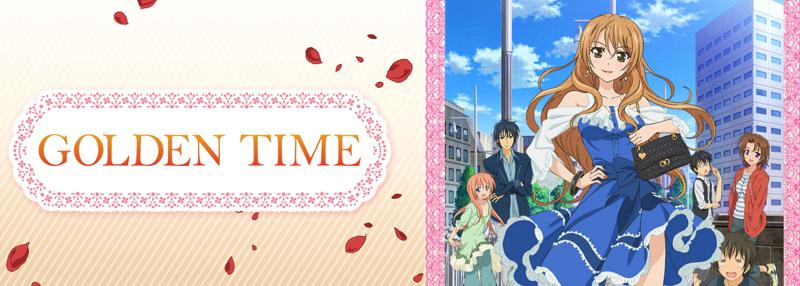
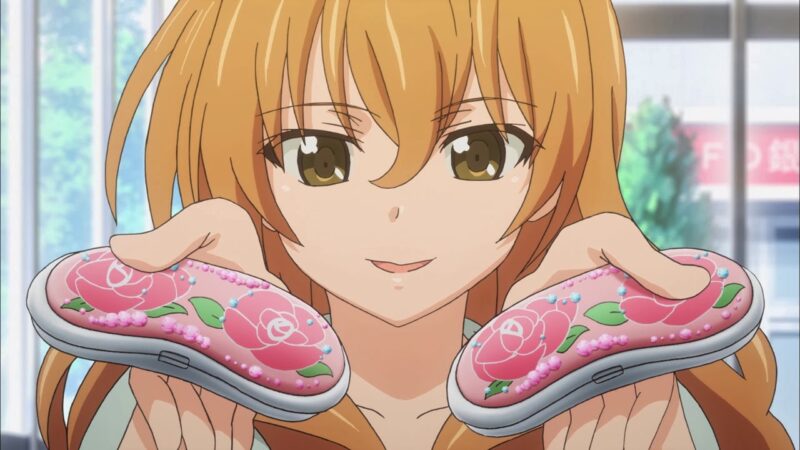
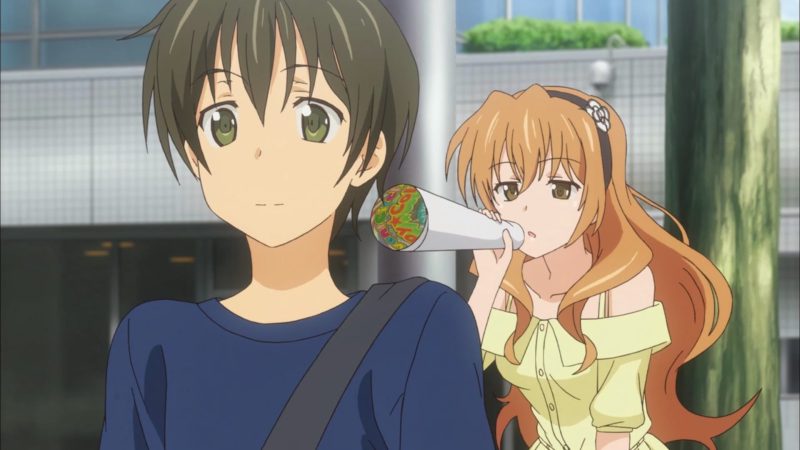
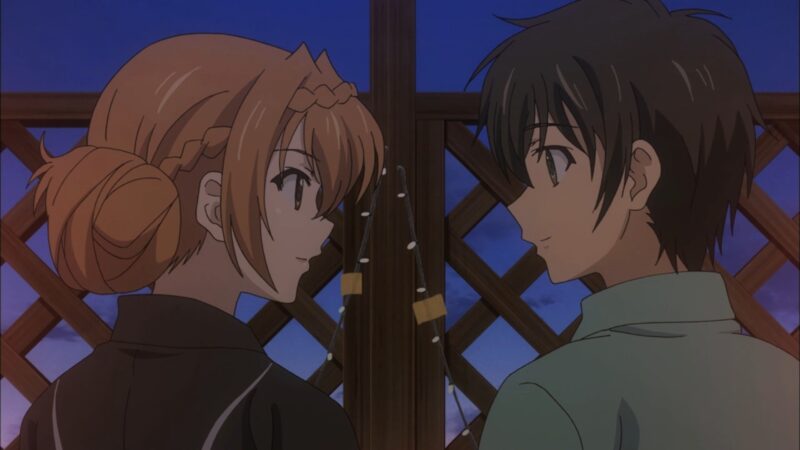
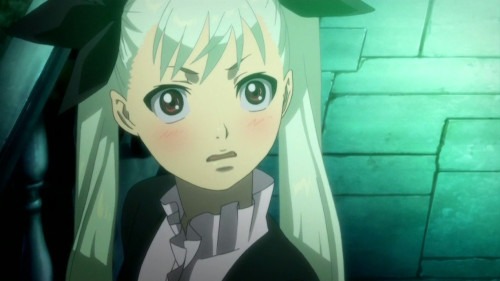

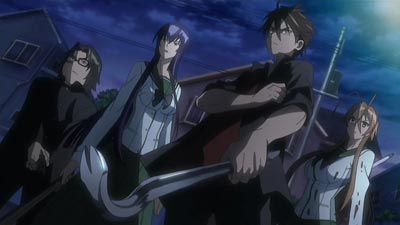
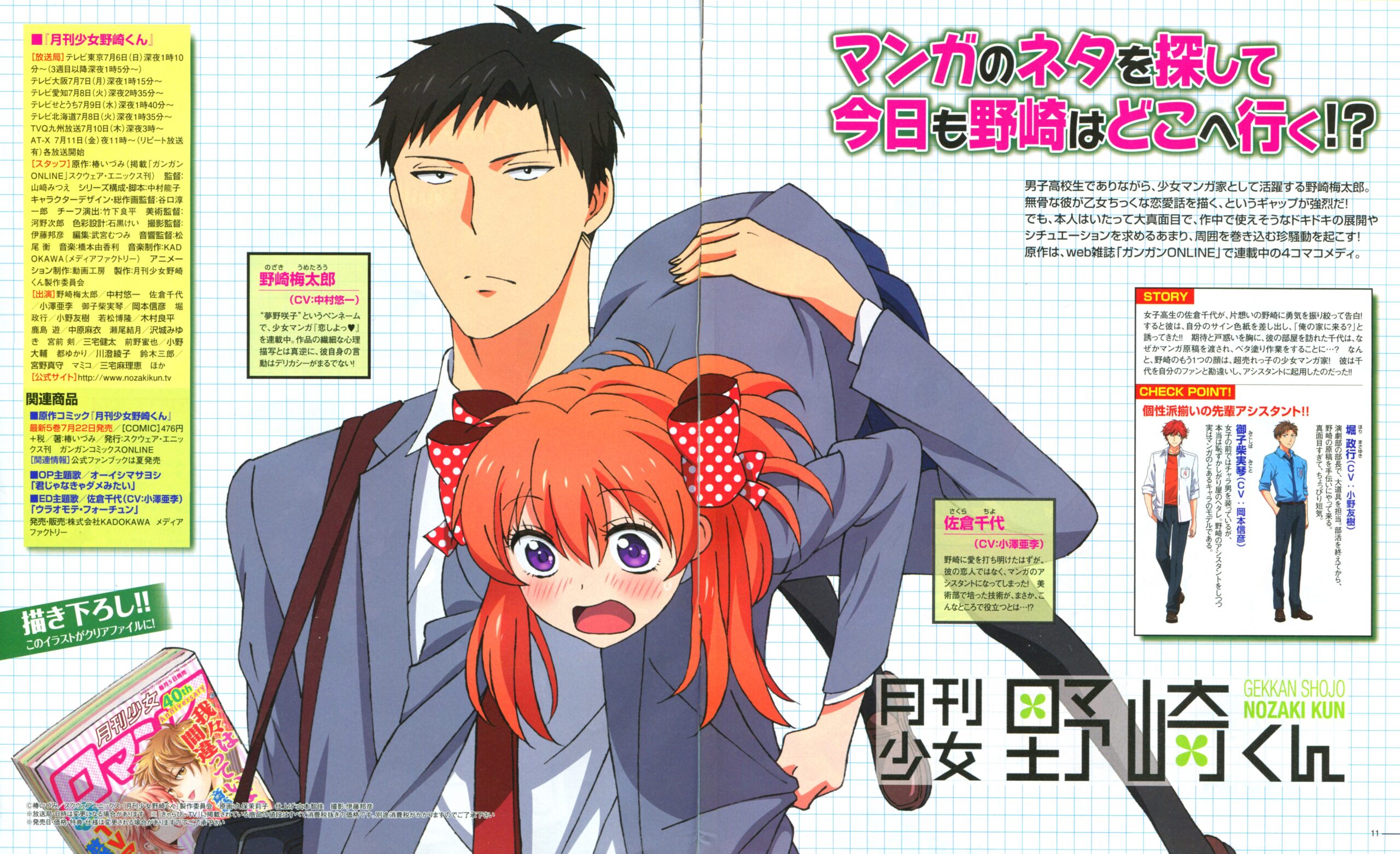
Golden Time is my favorite anime of all time. I really appreciated your deep dive and your article. I enjoy your work.
I’m glad you enjoyed the article. Thank you! Golden Time may yet prove itself to be a sleeper classic.